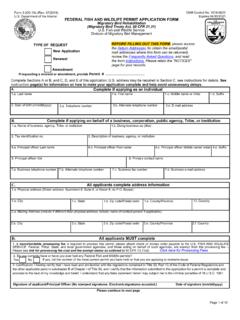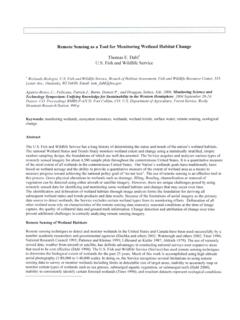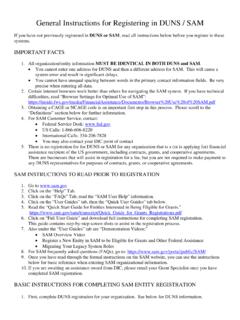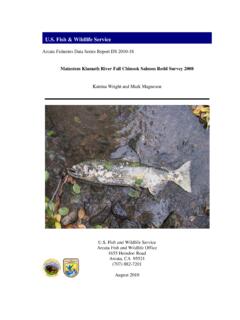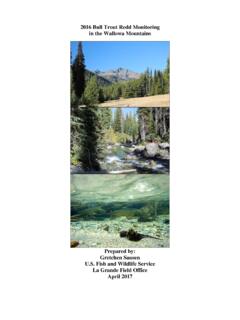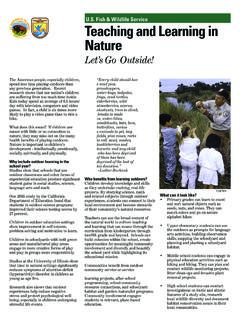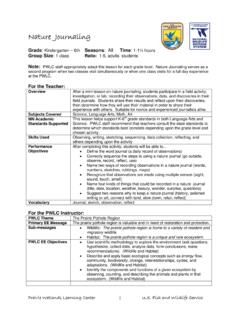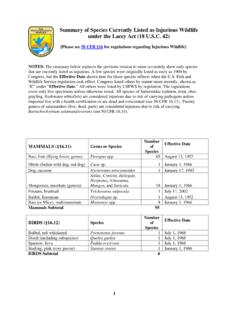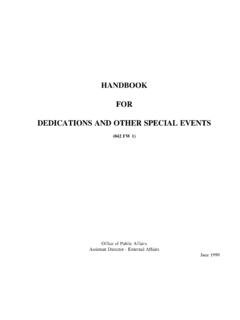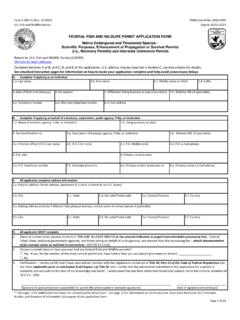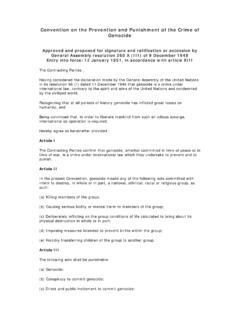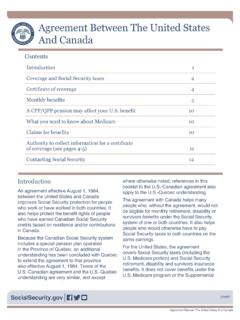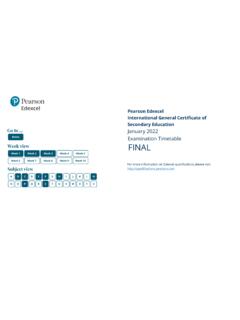Transcription of U.S. Fish & Wildlife Service Can I sell it? - FWS
1 Can I sell it? Fish & Wildlife laws that protect Wildlife and plants generally address the removal of species from the wild as well as commercialization in any form whether alive or dead, or as parts or manufactured products. In some cases, the age of the item may make a difference as to whether it can be sold. Some Wildlife laws prohibit all sale or purchase of products made from a protected species. Examples include the Migratory Bird Treaty Act (which protects more than 1,000 wild birds native to the United States) and the Bald and Golden Eagle Protection the Endangered Species Act (ESA), the legality of selling an item made from an endangered or threatened species in interstate or international commerce may depend on a number of circumstances, including the age and origin of the item and whether the species is native to the United States. The Endangered Species Act is the only Federal Wildlife law that addresses the concept of an antique, and the statute specifies that such items must be at least 100 years Convention on international Trade in Endangered Species of Wild Fauna and Flora (CITES), a treaty that regulates international trade in certain species, requires permits or other paperwork for imports and exports of thousands of animal and plant species and products made from them, including items that were acquired before being listed under CITES.
2 The Marine Mammal Protection Act (MMPA) prohibits sale of whale, walrus, polar bear, and other marine mammal species. However, exemptions exist for products that pre-date the law (1972) and products that qualify as authentic Alaskan Native handicrafts and clothing, but only if the species does not have further protection under the ESA ( , many whales, some seals).Watch list * As a buyer or seller of items made from or containing Wildlife products, it is important to be aware of the laws governing commercial trade. Of course, these laws can be complicated, so when in doubt, contact the Fish and Wildlife Service to determine whether it is legal to buy or sell an item. For us to answer your questions accurately, you must be able to tell us the species involved, including the scientific name, if watch list highlights some of the most common Wildlife and plant materials that may be problematic to buy, sell, import, or elephant ivory: A near-total ban on commercial trade in African elephant ivory went into effect in the United States on July 6, 2016.
3 Regulations do not restrict personal possession of ivory. Permits required for import or export. Consult our webpage What Can I Do With My Ivory? ( ) for information on prohibited versus allowable activities. Examples: Carved or raw tusks, carvings, jewelry, pianos with ivory keys, furniture or other inlay, decorative elephant ivory and other items: Generally cannot be sold in interstate or international commerce, with certain limited exceptions. Consult our webpage What Can I Do With My Ivory ( ) for information on prohibited versus allowable activities. Permits required for import or export. Sale of items within a State allowed unless restricted by use after import limitations associated with items imported after the listing of the species under CITES or unless prohibited under State : Carved or raw tusks, carvings, jewelry, chess sets, inlay, and decorative horn: Generally cannot be sold in interstate or international commerce.
4 Consult the Service for limited exceptions. Import or export requires a permit. Sale of items within a State allowed unless restricted by use after import limitations associated with items imported after the listing of the species under CITES or unless prohibited under State Guide to Wildlife and Plant Protection LawsElephant ivory fan with hand painted silkDagger with rhino horn handleUSFWSUSFWSUSFWSE xamples: Libation cups, dagger handles, carvings, trophies, and turtle shell and leather: Generally cannot be sold in interstate or international commerce. Consult the Service for limited exceptions. Permits required for import or export. Sale of items within a State allowed unless restricted by use after import limitations associated with items imported after the listing of the species under CITES or unless prohibited under State : Tortoiseshell jewelry, combs, mirror casings, brushes, and guitar picks; furniture, musical instruments, or other items with shell inlay; boots, belts, and migratory birds or migratory bird feathers and parts: With some limited exceptions, sale of any type prohibited regardless of age of the specimen.
5 (Exceptions involve limited purchase and sale of certain captive-reared and sport-taken migratory waterfowl.)Examples: Victorian songbird collections, vintage women s hats, and feather bald or golden eagles or eagle feathers and parts: Sale prohibited regardless of ageExamples: Native American cultural and handicraft items (fans, headdresses, dreamcatchers); bald eagle bear, jaguar, or other species listed as endangered or threatened: No interstate or international sale of any type regardless of age, without a permit. Sale within a State allowed unless prohibited under State lawExamples: Taxidermied specimens, rugs, clothing, and other fur ivory: Import or export requires a permit. Sale legal if ivory is pre-Act under the MMPA (acquired before 1972) or is a product purchased within the that qualifies as an authentic Alaskan Native teeth or bone: Consult the National Oceanic and Atmospheric Administration for guidance on sale.
6 Import or export requires a permit. Example: bear: Import or export requires a permit. Sale within the United States legal if polar bear is pre-Act under the MMPA (acquired before 1972) or is a product purchased within the United States that qualifies as an authentic Alaskan Native handicraft. Examples: Taxidermied trophies, rugs, and fur rosewood: Brazilian rosewood is listed in CITES Appendix I. Commercial international trade typically not allowed, except for items acquired or manufactured before listing under CITES, and any import or export requires a : Guitars, marimbas, billiard cues, chess sets, furniture, and furniture inlay.* NOTE: Please be aware that this list does not include every type of Wildlife or plant material that could be problematic to sell, buy, import or export. For example, thousands of species not mentioned here are listed in CITES Appendix I or II and may require permits from the importing, exporting, or re-exporting Fish & Wildlife ServiceDivision of Management Authority5275 Leesburg Pike, MS: IAFalls Church, VA 22041-3803703/358-2104 or 800/358-2104e-mail: @USFWSIntlLike us on FacebookUSFWS_International AffairsOffice of Law Enforcement703/358-1949e-mail: August 2016 Elephant ivory carving setElephant ivory statueUSFWS
